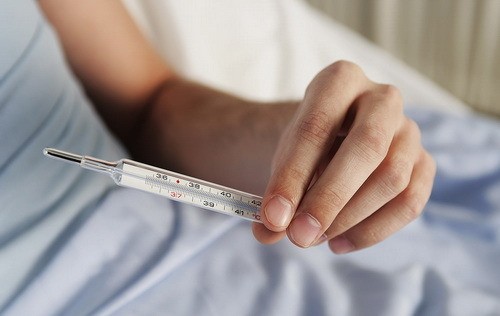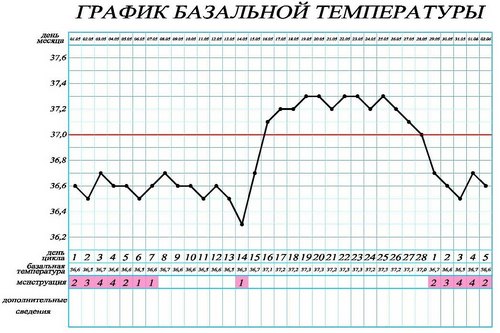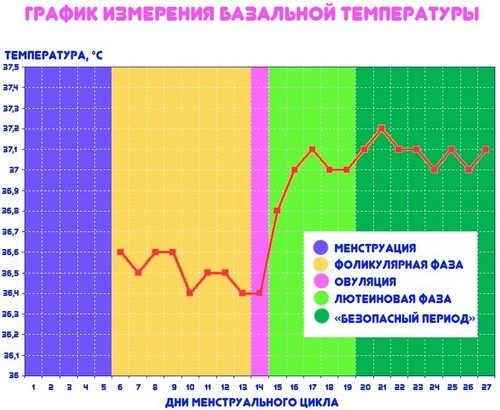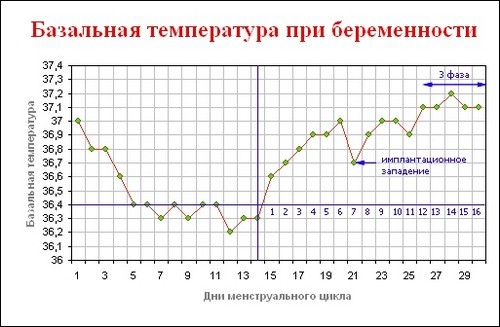BT is measured immediately after sleep, without getting out of bed. An important condition for correct measurements is not to make any movements, not to stand up, not to raise the body to a vertical position.
The accuracy of the diagnosis of ovulation depends on the accuracy of the measurements.
And that means the quality of determining the period when pregnancy is possible. Let’s look at how to measure basal temperature correctly.
Any movement activates the flow of blood and raises the temperature inside the body. That is why the basal temperature in the evening is higher.
It is necessary to measure the minimum temperature, which is formed only due to the work of internal organs, without muscles. Therefore, basal temperature should be measured immediately after waking up, before going to the toilet and washing.
It is important to observe the following conditions:
- The duration of the previous sleep should be more than 6 hours.
- Between going to the toilet at night and measuring BT should pass at least 3 hours. That is, if you got into the toilet at 5 in the morning, then at 7:00 the measurements would be unreliable.
- Before measurement, there should be no sexual intercourse. The minimum time between sex and BT measurement is 8 hours.
- To draw up the correct schedule, you need to measure the temperature at the same time (at 7-00, or at 7-30, or at 6-40 – depending on your mode).
- Duration of measurement – from 5 to 7 minutes.
- The depth of the thermometer in the anus is 2-3 cm.

It is important to consider that the following factors influence the temperature indicator:
- unhealthy digestive organs (intestinal disorders, inflammation of the pancreas, liver);
- lack of sleep;
- alcohol taken the day before;
- mental overload, nervous experiences, stress.
These factors violate the accuracy of measurements and reduce the reliability of the schedule. The vertical position of the body (sitting, standing) causes a rush of blood to the pelvic organs, which increases the internal temperature of the body and makes the measurements unreliable.
Measurement procedure and BT indicators
For proper measurement, the thermometer is inserted into any open cavity of the human body (mouth, vagina, anus). According to the method developed by the professor of medicine Marshall (1953), basal temperature (BT) is measured in the rectum (through the anus). This is often done when the temperature is necessary to measure the baby. It is not possible to hold a thermometer under the arm, so it is inserted into the ass.

For women, measuring the temperature in the anus or vagina allows you to determine fluctuations in tenths of a degree. They show a noticeable jump in the basal rate during ovulation.
Why use the measured indicators
The technique for measuring basal temperature is designed to diagnose ovulation of an egg. Ovulation is the exit of an egg from the membrane (follicle), which occurs after its maturation. The egg enters the fallopian tube and moves to the uterus. These changes are accompanied by an increase of tenths of a degree. The basal temperature before ovulation first decreases slightly, and then sharply goes up. From the moment the egg is released, conception becomes possible.
Daily measurement of basal temperature allows you to determine the day of ovulation. Which, in turn, allows you to take measures to prevent pregnancy (if it is undesirable) or vice versa, try to get pregnant precisely on these days.
Basal temperature graph
The measured data is entered in a table and build a graph. In addition, additional factors are recorded in the table that can affect the accuracy of diagnosis (the presence of a cold, infection, headache).

The graph looks like a broken line. At the beginning of the cycle, in the first three to four days, the indicator is at the level of 36.8 – 37.0 ºC (it can fluctuate by 0.1 – 0.2º). After the monthly degrees, they drop to the lowest level – 36.5 – 36,.8ºC. It is this temperature that is necessary for the maturation of the egg.
Ripening time takes up to 14 days, so in the next decade of the month the schedule will fluctuate around the same indicator – from 36.6 ºC, up or down by 0.1-0.2º. In the middle of the cycle (before ovulation for 1 day), the degree decreases (by, 2 – 0.3º), after which it rises sharply by 0.3 – 0.6º and reaches 37ºC or higher.
Basal temperature during ovulation
BT at the time of ovulation is a slight decrease before the jump to 37º. By the way, on this day the maximum probability of conception is 33%. Therefore, if you are not planning a pregnancy, limit your sexual contacts or protect your sex (with a condom or other suitable contraception).
The basal temperature after ovulation is the rise to the upper level (with slight fluctuations at the top of the graph).
A further schedule of BT depends on whether pregnancy has occurred or whether the body is preparing for menstruation. If the pregnancy has taken place, then the basal rate remains at a high level. In the body of a woman, progesterone is formed, which maintains high BT values.
If conception has not occurred, the hormonal background returns to normal, the rate decreases. This occurs a week before menstruation (BT decreases by 0.3 – 0.6º).
Such a graph of basal temperature during ovulation is characteristic of a healthy woman. In the case of any violations (in the genital area or in other organs), the normal broken graphics get off, the jump becomes not so obvious. Then the biological method of contraception, based on the measurement of the basal rate, is ineffective.
BT pathology diagnostics
A full cycle of BT changes within a month allows you to diagnose the causes of infertility and other disorders in the functioning of the genital organs. The most common cause of female infertility is the lack of ovulation. Measurement of BT allows you to find out whether the egg is released, and on what days of the cycle it is easier to get pregnant.

In addition, BT signals the presence of inflammation in other organs. This affordable method allows you to simply, independently and completely free of charge examine yourself to identify hidden pathologies.
Days of Safe Sex and Desired Conception
Monthly measurements of BT allow you to make a typical schedule of temperature changes. According to the graph, it is possible to predict with great accuracy the days when conception is possible and the days when conception is impossible under any conditions. This information can be used both to prevent an unwanted pregnancy and to conceive a desired baby. Let’s look at when conception is possible, and how to use the method as contraception.
The measurement of BTT is called biological contraception. This is the safest birth control method. How is it used?
The days of probable conception are two days immediately after the egg leaves the follicle (ovulation). And also two to three days before ovulation.
The egg is not yet able to be fertilized these days. But sperm can survive for two days. Therefore, getting through the vagina into the uterus, they are in it for several days and fertilize the egg immediately after its release and the follicle. Thus, two to three days before ovulation are added to the days of a possible conception.
The period of ovulation and the days before it (only about 5-7 days) are called fetal. If you are not planning a pregnancy, then refrain from sex or protect yourself with a condom (or other contraception). If you have planned a baby, then have sex the day before ovulation or directly on the day the egg is released. How to determine the egg yield, what basal temperature during ovulation should be measured in the vagina?

According to the schedule, the day of ovulation is a slight decrease in degrees, and the following days – a jump in the indicator up. These two days should be considered “dangerous” (for opponents of pregnancy) or fruitful (for those who want to wait for the baby).
The period after ovulation is called absolute infertility. The life span of an egg after an ovary is 24 hours. An unfertilized egg is destroyed within a day, the probability of becoming pregnant two days after ovulation approaches zero.
According to some studies, Y-sperm (those that conceive a boy) are most active.
They move faster and are the first to fertilize an egg on the day of ovulation. However, X-sperm (conceive a girl) are more hardy. Therefore, if sexual intercourse took place a few days before ovulation, it is the X-spermatozoa that survive to see the egg. These data allow with a certain degree of probability to plan the sex of the child.
The above distribution of days for periods of possible and impossible conception is not true for all women. The protection system only works if the period is stable, like a clock. For all others, this method is not effective.
What is the basal temperature during pregnancy: normal and deviations
Any changes in the average BT are due to hormonal changes. All vital processes in a woman’s body are initiated by hormonal changes. Therefore, pregnancy is accompanied by a change in BT.
The basal temperature during pregnancy remains high (above 37.2ºC). The presence of high BT provides the hormone progesterone. It is intensively produced in the first four months of bearing a baby. Therefore, the BT score during this period is increased. After the level of progesterone decreases, the basal temperature decreases with it. Therefore, after 20 weeks of pregnancy, it makes no sense to measure its value.

Basal temperature in the early stages of pregnancy is the first sign by which it is possible to judge the conception that has taken place before menstruation is delayed. However, this symptom is ambiguous. Keeping the degree indicator at a high level accompanies inflammatory diseases, physical activity, and the intake of certain medications. Therefore, the test will tell you exactly about pregnancy. And indirectly – high BT.
How to measure basal temperature to determine pregnancy
We focus on two main conditions:
- BT is measured without getting out of bed. To correctly measure the basal temperature, the thermometer should be left on the table next to the bed, where it can be easily reached with your hand, without turning the body in bed.
- BT is measured at the same morning time (with a difference of no more than 15 minutes).
Do not measure the temperature during the day. Basal temperature during the day will not show all the important changes in the body. Only daily morning measurements will reflect the actual level of your hormones.
Schedule BT during pregnancy: what to fear
The graph of the basal temperature during pregnancy looks like a broken line, which fluctuates around + 37.4ºC by 0.1-0.2ºC. A decrease in the indicator lower than 37ºC indicates that the amount of progesterone in the body has decreased. This means the possibility of a miscarriage, a threat of failure or a missed pregnancy. An urgent medical consultation is needed.
However, this diagnosis is ambiguous. Perhaps, overwork has affected, or you too have heard enough of stories about problematic childbirth. Any stresses, overloads and experiences reduce the level of BT and lower the amount of hormones. Try to bounce back and leave your nerves for later.
The highest possible BT value during pregnancy can reach + 38ºC. If your BT score is higher, you should consult a doctor. This indicator often accompanies internal infections, inflammation.
Too high BT can be the result of incorrect measurements. For example, if you walk around the room to take a thermometer from the cabinet and only then measure the temperature, then the readings will be above 38ºC, although the woman’s body will be healthy.
I wonder what should be the basal temperature before menstruation? And why is this indicator important?
Measuring BT before and during menstruation allows you to determine the presence of inflammatory diseases.
If the temperature during menstruation jumps above 38ºC, then there is a hidden source of inflammation inside.
- Basal temperature before menstruation is high. During menstruation, the level of progesterone decreases, so there is a decline in the basal rate. From higher values (37.8ºC on the first day of menstruation), it drops to 37.1ºC (on the fourth and fifth day of menstruation).
- The basal temperature during menstruation is the average value between the high temperature of the previous period and the low value after menstruation. During menstrual periods, BT is held at about 37ºC or slightly lower.
- Basal temperature after menstruation is the lowest indicator of the cycle (not counting the day of ovulation, when the indicator is additionally reduced by several tenths of a degree).
Why do you need to know what basal temperature is before menstruation? Measurements are necessary for early diagnosis of pregnancy. If you had sex without a contraceptive, you can determine if you are pregnant before your period is delayed. To do this, measure BT. If the basal rate does not decrease, then there is a pregnancy.
Nature gives us opportunities and presents. You can not use dubious hormone-based contraception, refuse a condom if you are sure that ovulation has already ended.



